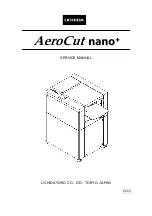
19
Operating manual
Starting the engine
Note:
The engine uses Advanced Starting Technology™
(spring-supported starting process) which significantly
reduces the energy expenditure required to start
the engine. You must pull out the starter rope until
the engine starts by itself (spring-supported).
It is not necessary to pull violently on the rope –
the pulled rope does not resist greatly.
Please note that this method of starting the engine
is quite different (and much easier) from what you
are used to.
1. Mix petrol (gasoline) with oil. Fill the tank with the mixture.
See
instructions on mixing oil and petrol.
2. Put the ignition switch in the START (I) position (Fig. 17).
Note:
On some models the switch is permanently
in the
ON
[
I
] position.
Tip:
If starting a unit which has not been used for a long
time (or brand new or difficult to start), press the intake
pump 20 times.
3. Slowly and fully press the intake pump 10 times.
The fuel must be visible in the pump (Fig. 18).
If this is not the case, press a further three times
or until the fuel can be seen.
On appliances with a choke lever
4. Move the choke lever to position
1
(Fig. 18).
Tip:
Ensure that the choke is engaged in position (1).
5. With the unit on the ground, press the throttle lock and
actuate the throttle. Hold down the throttle. Pull the
starter rope 3 x in a
controlled and continuous
movement
(Fig. 19).
6. Move the choke lever to position
2
(Fig. 18).
7. To start the engine, pull the starter rope in a
controlled
and continuous movement
1–5 times (Fig. 19).
8. Press on the throttle to warm up the engine
for 15–30 seconds.
Note:
At lower temperatures the engine may require longer
to warm up and reach maximum speed.
Note:
The unit has warmed up adequately when the engine
accelerates without faltering.
9. When the engine has warmed up, move the choke lever
to position
3
(Fig. 18). The unit is now ready to use.
If...
the engine falters, move the choke lever to position 2
(Fig. 18) and leave the engine to warm up longer.
If…
The engine does not start, repeat steps 3–7.
If...
It is not necessary to use the choke to start a hot engine.
Move the switch to the
ON
[
I
] position and the choke
lever to position 2.
If...
Move the choke lever to position
3
if the engine floods
when attempting to start it. Press the throttle.
Pull forcefully on the starter rope.
The engine must start after 3 (three) to 8 (eight) attempts.
On appliances without a choke lever
1. Pull the starter rope in
controlled and continuous
movement
, unil the engine starts (Fig. 19).
Note:
During the starting process do not actuate the throttle.
2. After starting the engine, wait 10–15 seconds before
you actuate the throttle.
If…
The engine fails to start repeat the procedure.
Stopp the engine
1. Take your hand off the throttle (Fig. 17). Leave the idling
engine to cool down.
2. Move the switch (depending on model) to the
OFF
[
0
]
position and hold (depending on model) until the engine
is off (Fig. 17).
Holding the lawn trimmer
Before using the unit, place yourself in the operating position
(Fig. 20). Check the following:
The user is wearing eye protection and the correct
clothing.
The shoulder belt has been set to the correct height.
The handle bar has been set in such a way that you can
grip it with both hands without having to stretch out your
arms.
The unit is below waist height.
Hold the cutting attachment parallel to the ground
so that the vegetation to be cut can easily be reached
without the user having to bend forward.
Setting the length of the trimmer line
(depending on model)
You can release the trim line with the bump knob cutting
attachment without stopping the engine. To release more
line, tap the cutting attachment on the ground (Fig. 21)
while running the lawn trimmer at a higher speed.
Note:
The trim line should always have the max. length.
The shorter the trim line becomes, the more difficult
it is to release.
Each time the head is bumped, approx. 25 mm of cutting line
are released. A blade in the cutting attachment guard cuts
the line back to the correct length if too much line is released.
It is best to bounce the bump head on bare ground or hard
earth. If you attempt to release the trim line in tall grass,
the engine may stall. Always keep the trim line fully extended.
The shorter the trim line is, the more difficult it is to release.
Note:
Do not run the bump head along the ground.
The line may break by:
becoming entangled with foreign objects
normal material fatigue
attempting to cut thick-stalked weeds
striking walls, garden fences, etc.
Содержание GT-S 2-27
Страница 1: ...GT S 2 27 GT S 2 27 ...
Страница 2: ...2 13 23 35 59 71 47 3 3 ...
Страница 83: ...I12 FORM NO 769 08696 www WOLF Garten com ...
















































